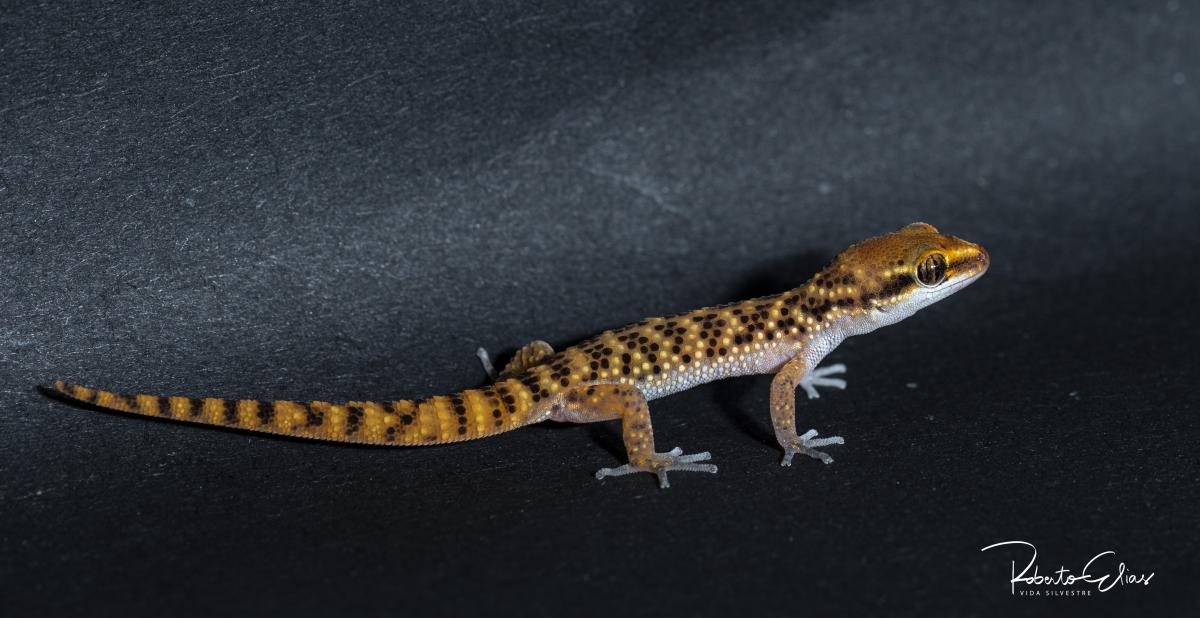Conservation actions agreed upon at a 2017 workshop for the elaboration of the National Plan for the Conservation of the Lima leaf-toed gecko (Phyllodactylus sentosus), facilitated by CPSG Mesoamerica, are already being carried out to change the future for a species that is categorized on the IUCN Red List as Critically Endangered. Actions are proceeding through in situ, ex situ, and education efforts, representing a true CPSG One Plan Approach.
In 2020, ex situ actions for the Lima leaf-toed gecko hit a conservation milestone. The Wildlife Laboratory of the Universidad Peruana Cayetano Heredia School of Veterinary Medicine and Zootechnics achieved the first Lima leaf-toed geckos born in captivity. So far, the program has four successfully hatched individuals. At the present, three have survived and are doing well. Success stemmed from a multi-year effort, starting with a pilot breeding program that began in 2017. In 2018, a research project built on that pilot program to develop a maintenance and reproduction protocol for the species in captivity that includes specifications for successfully breeding the species, such as diet, environmental parameters, reproduction, and health status.

Currently, in situ research efforts aim to implement a population monitoring plan to connect with ex situ efforts to develop effective breeding and reintroduction protocols that can increase interest in captive breeding of the geckos and generate studies of inbreeding and genetic diversity. Development of a genetic study of the species began last year with preliminary results showing strong population isolation and signs of inbreeding, highlighting the concern for this species. The latest in situ research corroborates that the Lima leaf-toed gecko is an endemic Peruvian species with a small number of known locations, including more than ten in Lima. It has a small population size, and its major threat remains the destruction and fragmentation of its natural habitat.
Educational efforts focus on this main threat to the species: the destruction and fragmentation of its natural habitat due to the growth of the city of Lima. Actions include developing awareness-raising activities, such as talks and workshops directed to the general public, which the aim to inform audiences about the geckos’ situation and that of endangered wildlife in general. About 35 activities have informed almost 6,000 people who previously had no knowledge of the species or its existence. In addition, five institutions that impact the conservation of the species or its habitat attended informative workshops. In 2019, the local government chose the gecko as an "environmental guardian," creating a further opportunity to continue to raise awareness for the species.
These efforts are ongoing, and the team brought together by the 2017 workshop continues to work on building partnerships with academic groups and environmental institutions to join in sharing information from their digital channels about threats to the species to strengthen the interest of the human urban population in protecting the Lima leaf-toed gecko. Developing research will also continue to aid those pursuing the conservation of the Lima leaf-toed gecko, for example, by helping them know the maximum lifespan and reproductive age of the geckos, prioritize the protection of the remaining populations, and implement relocation and reintroduction programs. The team is grateful to its collaborators who directly or indirectly support the Project for the conservation of the Gecko de Lima.
Authors:
In situ research: José Pérez Z. 1, 2 and Katya Balta 1
Ex situ research: Roberto Elias 5 and Vanessa Sánchez 4
Education: Rosa M. Urbano 3 and Carolina Pedraza 3
- Laboratorio de Estudios en Biodiversidad UPCH
- Dpto. Herpetología Museo de Historia Natural. UNMSM
- Organización de Eventos Científicos – Perú
- Asociación Grupo RANA
- Universidad Peruana Cayetano Heredia


